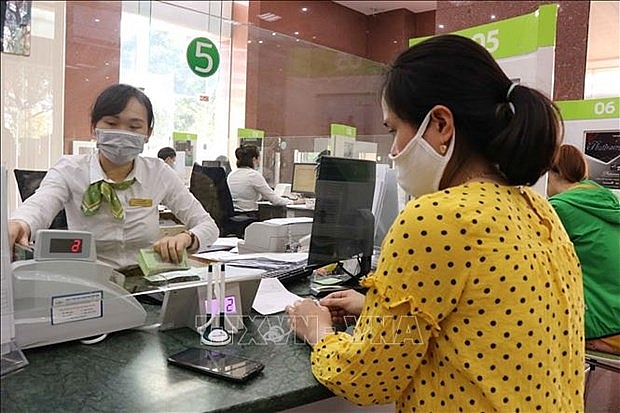SBV’s policy rate cut a positive sign for market, economy: experts
 |
| Transaction at a branch of Vietcombank in Bac Ninh province (Illustrative photo: VNA) |
Finance specialist Nguyen Tri Hieu said through the adjustment, the central bank will partly support banks in terms of capital. Meanwhile, the cut also affects commercial banks and financial institutions’ interest and loan rates, mainly on accounts with terms of less than 6 months.
Echoing the view, banking expert Le Xuan Nghia said that in addition to the delay of loan payments, reducing interest rates is vital to helping businesses and the economy recover.
Head of the SBV’s Monetary Policy Department Pham Thanh Ha added that the move will create favourable conditions for credit institutions to sustainably reduce their rates, thereby easing the burden on the economy.
The adjustment was in line with evaluations of the global market, as many central banks worldwide have taken similar measures to navigate economies through the crisis brought about by COVID-19, he noted.
By May 13, most of the commercial banks in Vietnam had lowered their interest rates on savings accounts with terms of less than 6 months, which previously stood at between 3.9 – 4.75 percent per annum.
The central bank will keep a close eye on domestic and foreign market developments to actively and flexibly adjust monetary policies in an attempt to curb inflation, stabilise the macro-economy and ensure liquidity and safe operations of credit institutes.
The SBV on May 12 decided to cut lending and discount rates, with annual refinancing rates coming down to 4.5 percent from 5 percent and discount rates to 3 percent from 3.5 percent.
Ceiling rates on deposits of one to six months are brought down to 4.25 percent per annum from 4.75 percent, and rates for non-term deposits and those below one month, to 0.2 percent from 0.5 percent.
Short-term lending rates for five priority business sectors are down to 5 percent from 5.5 percent per annum under the decision.
What the stars mean:
★ Poor ★ ★ Promising ★★★ Good ★★★★ Very good ★★★★★ Exceptional
 Tag:
Tag:
Related Contents
Latest News
More News
- Main drivers for Vietnam’s digital economy future (December 03, 2025 | 11:35)
- Pivotal stage of growth paves way for rise in M&As (December 03, 2025 | 10:00)
- Positive projections for M&A interest from Thailand (December 03, 2025 | 09:40)
- Manifesting the first line of defence in cybersecurity (December 03, 2025 | 09:00)
- The transformational role AI can play in accounting arena (December 03, 2025 | 08:00)
- Unlocking 5G-AI potential in Singapore (December 03, 2025 | 08:00)
- Data-driven strategies vital for a fast-evolving nation (December 02, 2025 | 09:41)
- Policy to practice: how Vietnam can lead the region (November 26, 2025 | 16:03)
- Mobilising private capital at scale vital for climate battle (November 26, 2025 | 15:36)
- VILAF and Yoon & Yang launch Vietnam - Korea Practice Unit (November 26, 2025 | 15:16)





















 Mobile Version
Mobile Version